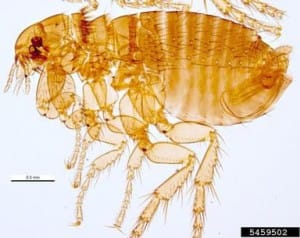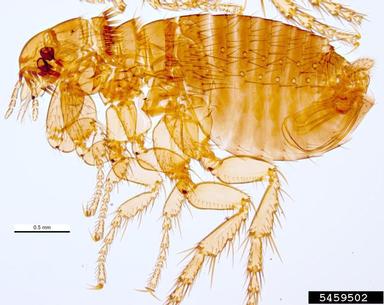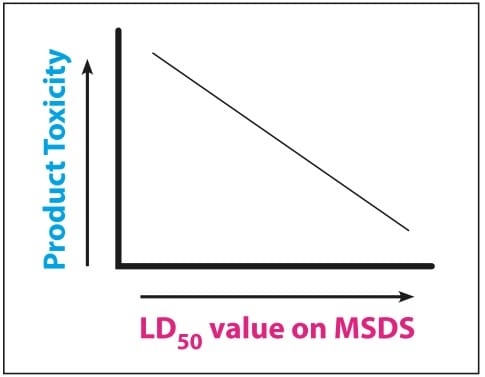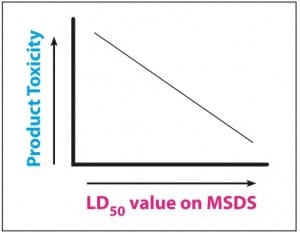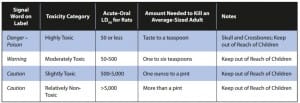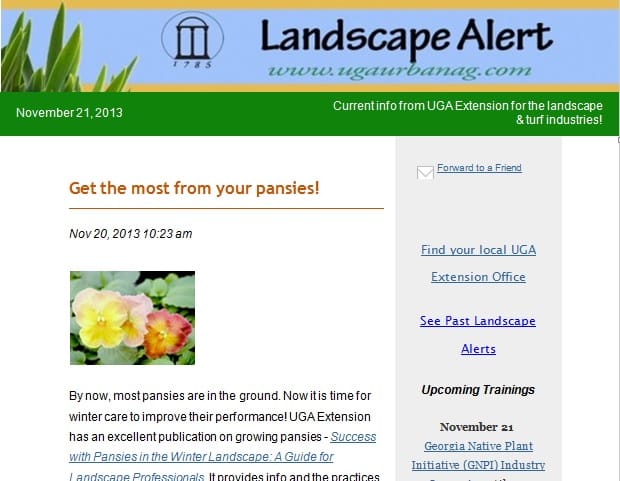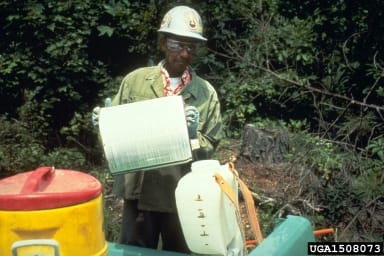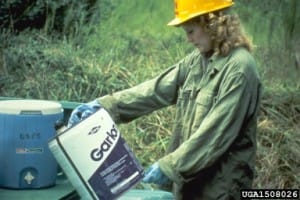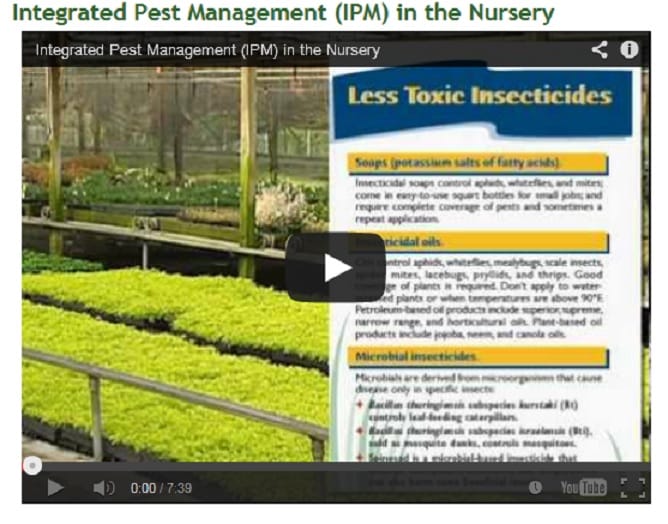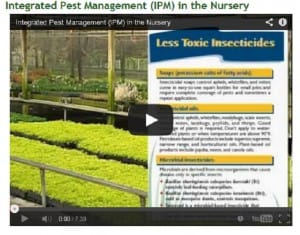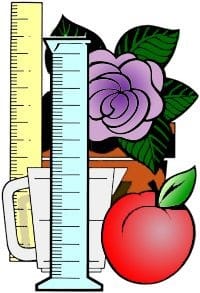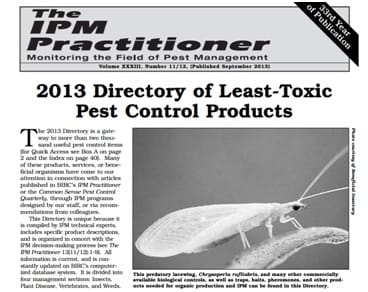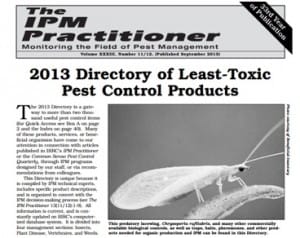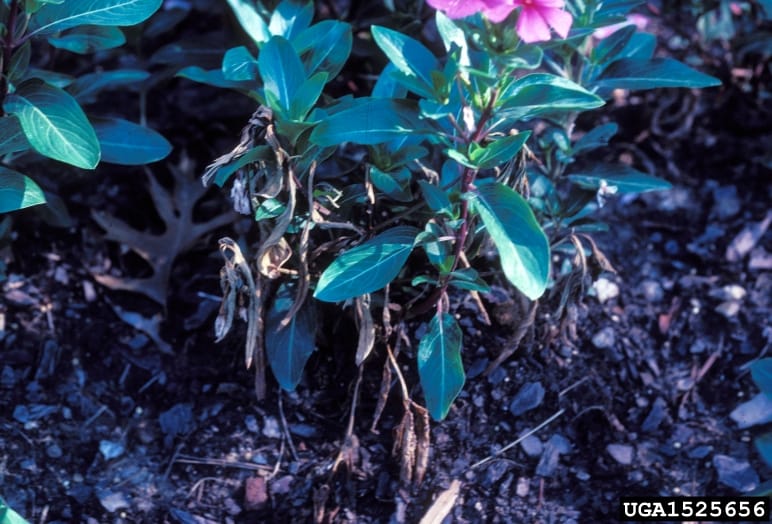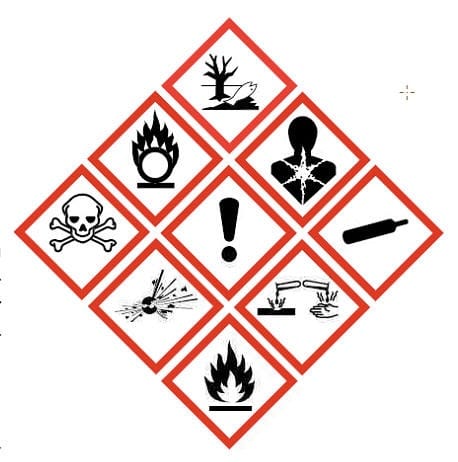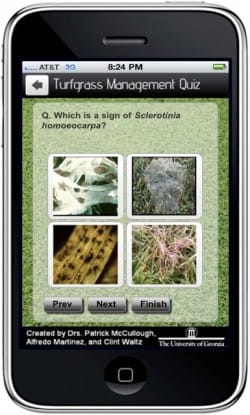Sharon Dowdy, News Editor with the UGA College of Agricultural and Environmental Sciences
Four mobile applications designed by University of Georgia specialists are putting lawncare information at your fingertips, literally.
The turfgrass apps created by UGA College of Agricultural and Environmental Sciences faculty make turf management in Georgia readily available. Turfgrass Management, Turf Management Calculator, Turfgrass Weeds and Turf Management Quiz can all be downloaded from the UGA Turfgrass Team website at www.GeorgiaTurf.com or straight to a mobile device through iTunes.
A lite version
The most popular UGA turfgrass app is Turf Management Lite. This free app was created with students, homeowners and professionals in mind. It includes photos of turfgrass varieties, pests, weeds and diseases.
Mobile applications, or apps as they are commonly called, can be downloaded onto smart phones like Droids and iPhones as well as portable tablets like iPads.
“Back in 2009, mobile apps were fairly new to smart phones. We saw a great opportunity to put the information where it can be easily accessed by mobile phone, iPods and tablets, instead of publishing a telephone-book-sized publication,” said Patrick McCullough, a UGA turfgrass specialist based on the Griffin campus. The turfgrass apps are his brainchild.
“Rather than have to go to the office and get an Extension publication or go online to view a publication, turfgrass professionals can now access the information they need in the field,” he said.
In-depth subscription version
There are three versions of the first app: Turf Management Lite, Turf Management Subscription and Turfgrass Management – Spanish. The lite and Spanish versions are free, but the subscription version costs $20 per year.
The subscription version includes everything from the lite version, plus information on pest control applications and a pesticide database. “You can search for trade names as well, and it includes PowerPoint presentations from UGA turfgrass faculty,” McCullough said.
The Spanish version is very popular in the turfgrass industry. “We have folks in the industry that speak Spanish as their first language. This app is a nice opportunity for those who are fluent in Spanish or primarily communicate in Spanish at work to have research-based turfgrass advice,” he said.
The Spanish version has been downloaded in more than 40 countries across the globe.
Making calculations easy
In 2011, the Turfgrass Management Calculator app was released. “It’s a comprehensive program that covers all types of applications, pesticide rates, fertilizer requirements, topdressing sand requirements, and calibration of sprayers and spreaders. Users enter known values of equations – like how much area is needed for a pesticide treatment at a certain rate. The app then does the calculation for you,” McCullough said.
College students majoring in turfgrass management use the app to double-check their math when learning these calculations, he said. “Some of these are very complex formulas. You can enter information for two products with different application rates and see which is more cost effective.”
The calculator app costs $5 and includes more than 16,000 pre-programmed calculations. It can also convert units from standard to metric. “It’s really a great tool for turfgrass managers and professionals, but students can learn a lot from it, too,” McCullough said.
Flash cards and quizzes
The Turfgrass Weeds app was released in 2011. It is designed to help users learn turfgrasses and weeds through a series of flash cards. “The cards reshuffle so users can continue to study and learn turfgrass species and weeds,” he said.
Just a few months ago, the UGA Turfgrass Team released its latest turfgrass app – Turfgrass Management Quiz.
“This app is a trivia style education game. You get test questions or photos with four choices to answer. You tap the correct answer, and when you’re done, you get a quiz score,” McCullough said.
The quiz app has two modes – quiz mode and study mode. Quiz mode scores your answers and study mode helps you get the correct answer.
“This app is perfect for students, but it can also be used by any turfgrass professional who wants to brush up on their knowledge. It’s a fun application that challenges you to get the best score, improve on your score and test your knowledge,” he said.
The new turfgrass apps are perfect for those who like to learn on their phones or mobile devices. UGA publications are also available online for computer users and in print form for those who still like the feel of a book in their hands.
“(Mobile apps) are a new technology – a new method to get information in the hands of the end user. We are trying to make it easier for people to get UGA turfgrass recommendations so it just makes sense for us to create these programs,” McCullough said.
To download the UGA turfgrass mobile apps or get more information on the turfgrass research at UGA, see the website www.GeorgiaTurf.com.
